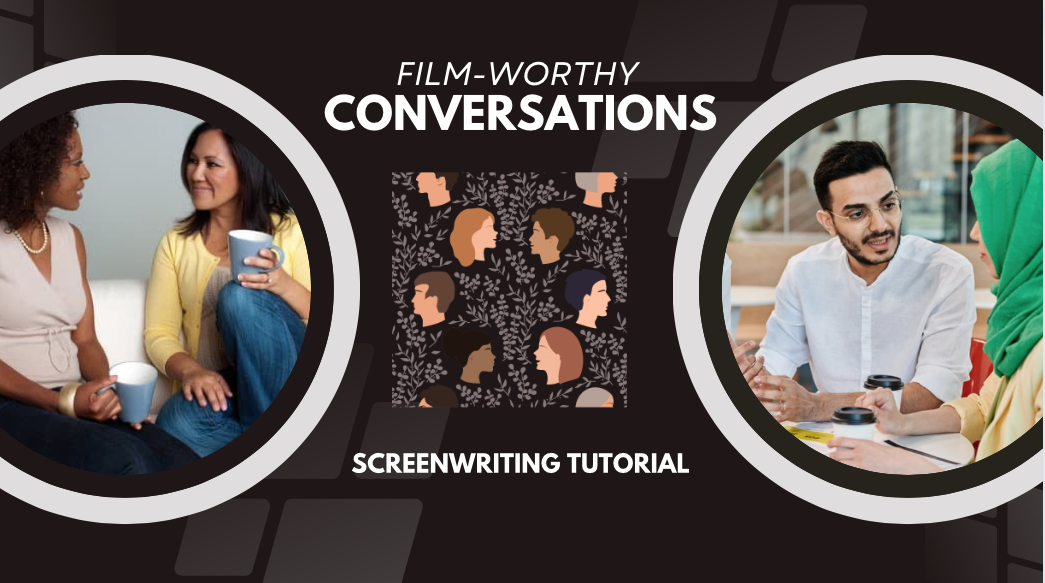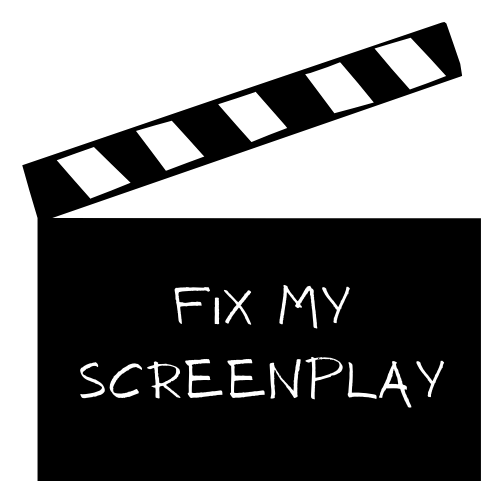New A.I. Screenwriting Tool (Free Subscription)

In this newsletter, New A.I. Screenwriting Tool (Video), Film-Worthy Conversations (Article), Character Transition | Script Study (Article), Marketing A.I. ChatGPT Prompts (Article).

Dialogue can make or break a screenplay. The screenwriter wants the dialogue to be sharp, poignant, and genuine, while creating distinct character voices that leaves cliches in the rear view mirror. Also, dialogue needs to avoid exposition because that breaks the show, don't tell rule. It's the screenwriter's job to discover visual ways to tell the story. A producer should be able to remove ALL DIALOGUE and still know what the story's about. If not, it's not a screenplay for motion picture production because 'motion picture' means 'moving pictures' not talking heads.
Here are some tips for screenwriters looking to perfect their screenplay dialogue:
CHARACTER IS KEY
Before a character's dialogue can sound unique, the screenwriter needs to know who they are. Do an extensive character sketch for every character in the story, especially the lead and supporting roles. What are the characters' habits, desires, fears, background, flaws, secrets, and personalities? Every word they speak should be a reflection of who they are at their core. Create a 1-page, written exercise and write how the character would react in different situations. For example, how does the character speak under pressure, in love, pleading, mischievous, scared, angry, elated, etc.? Go beyond the story's parameters and hear your characters' voices. By doing the exercises before beginning a screenplay, the writer can lock-in the characters' voices for every scene.
SUBTEXT MATTERS
The biggest mistake screenwriters make is trying to mimic real-life verbatim or using dialogue to provide information only. Real conversations are often layered with subtext. People rarely say what they mean. This is especially true in tense situations when the character is under pressure. Characters tend to dance around subjects, hint at deeper feelings, or sometimes they say the opposite of what they really feel. And film dialogue isn't real-life verbatim, it's real-life dramatized. There are two ways to learn how to write subtext; 1) Listen for it in real-life 2) Listen for it in movies/TV.
KEEP IT BRIEF
Real-life characters ramble, but in movies, every line should serve a purpose. Long speeches and monologues should only be used if absolutely necessarily. Try to write short, pithy dialogue that provides conflict, reversals, subtext and moves the story forward. Characters shouldn't speak in complete sentences - don't be afraid of choppy dialogue, incomplete thoughts....It's the Less is More rule of screenwriting. Besides, what isn't said can be more powerful than what is said.
DON'T REPEAT INFO
A common screenwriting error is repeating information already revealed via the visuals or via the dialogue. For example, a detective finds a vital clue at a crime scene. Later, he meets up with his partner. The partner doesn't know the information. Instead of repeating what the detective learned, jump into the scene later, and start the conversation when they're talking about the implications of the clue. Get in late, get out early in scenes. This can help the writer avoid repetition and keep the story moving forward. In fact, the writer doesn't even have to get into the scene where the detectives are talking about the implications. They can just be talking about the case, and the audience will 'assume' the detective has already filled the partner in on the details. Audiences just go with it....so, there's no need for the screenwriter to repeat info.
AVOID EXPOSITION
Audiences don't go to the movies to learn text-book information. While some exposition might be necessary, it's better to show, don't tell. Don't explain anger, love, betrayal, lust, etc., - SHOW IT via actions and subtle dialogue layered with subtext. Do not provide explanation on how something functions, what it is, etc. SHOW US or let the audience wonder about it to build suspense. Withholding information can be a powerful tool! Keep the payoff visuals because visuals are the powerhouse of film - dialogue is secondary. If you're a dialogue writer, then write for TV because movies are the realm of the visual storyteller.
DIALOGUE OUT LOUD
Few aspiring screenwriters take the time to read their dialogue aloud. This simple task can help identify problematic areas before the screenplay's rejected by producers. If possible, I highly recommend recording the reading. Let it set for a day or so, then come back and play it. The areas that require improvement will jump out at you! There are lots of recording programs (free) on the Internet and most computers have some type of recording capability. Read all the parts yourself, or with someone else. It doesn't matter. The key is to let it set for a few days before listening to the recording and making revisions.
AVOID CLICHES
The only genre that accepts cliches is comedy, and only when they're used to enhance the humor. Cliches are overly used because they're familiar and screenwriters make the mistake of thinking they're enhancing the character's voice because the audience can 'relate' to the character. When, in fact, cliches make characters sound alike, and fail to provide characters with a unique voice. Try to avoid them completely, or if the writer wants underlying humor in the story, then assign cliches to one character - even then, keep the usage of cliches to a minimum.
MANDATORY DEVELOPMENT
If dialogue doesn't push the story forward, reveal something about the character, create conflict, surprise us with a reversal, provide underlying meaning (subtext) or generate suspense, then it's filler information that doesn't belong. If the writer believes the information is vital to the story, then find a way to show it! That's the challenge of screenwriting and it's the reason why screenwriters make six-figure paydays. It isn't easy to do. It's a skill-set that can be learned and applied to scripts.
BREAK-UP DIALOGUE
Keep dialogue to 4-6 lines maximum. For longer passages, break up with action/description. There should be few, if any, all-dialogue or T-Pages in a screenplay. A T-Page has one-line of description and all dialogue, literally making the page look like the letter 'T'. An all-dialogue page has no description/action. It means there is one full minute with zero visuals, which is NOT acceptable for a motion/moving picture! What are we seeing? The overall ratio should be 60% visuals, 40% dialogue.
REVERSALS, REVERSALS, REVERSALS
A clever way to assure dialogue keeps the audience engaged is by adding reversals. When we expect the character to say one thing, have him say another! Finding ways to add reversals to dialogue in a scene is challenging, but it gives the story a masterful feel. Readers and audiences loves it!
ASSIGN PERSONALITY TRAITS
A way to assure characters sound different is to give them diverse personality traits. Rather than putting two peace lovers in a room, put a peace lover and one war monger in a room! Put an atheist and a priest in a room. Put a cop and a criminal in a room. Put a happily married man and a single man in the room. Even if characters in a scene agree, find a sticking point to mix things up and put the characters at odds.
CONFLICT & ARGUMENTS
Screenwriters often mistakenly believe conflict means characters arguing. Conflict in dialogue can be as simple as a man telling his wife he loves her new dress in a tone that says he hates it. That's conflict - even if the actual words are 'nice'. This type of dialogue creates subtext (underlying meaning) and provides the opportunity to create suspense for what happens next, reversals, foreshadow (divorce?), etc.,
INFORMATION OVERLOAD
The biggest challenge for dialogue is knowing when and where to dispense crucial dialogue information throughout the script. Too much , too soon can ruin story suspense, kill foreshadowing and flat-line the plot. Too late can become melodramatic. Screenwriters should also know when to deliver crucial information via dialogue and when it's better to reveal it via the visuals. The rule is simple: VISUALS FIRST, DIALOGUE SECONDARY. It's far more powerful to watch a hero walk off into the sunset, then to hear him explain why he's leaving.
OUTLINE DIALOGUE
The best way to outline dialogue is to avoid it until the outline's finished! Outline every scene. Work on plot structure! Know what happens and when. Add all transitions, THEN layer tidbits of dialogue into the outline. This can help the screenwriter hone in on when/where to provide information via dialogue. It can also help the writer avoid overwriting dialogue.
Film's a visual medium. The dialogue is just the icing on the cake.

To read this article, please subscribe by clicking the button below.

To get the Chat GPT prompts for Screenplay Marketing, please subscribe.
